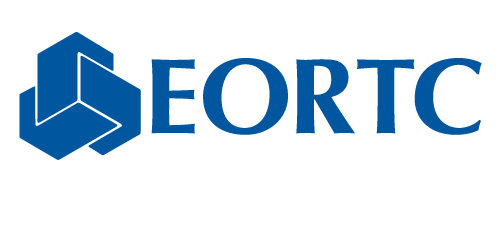New Kid on the block in cancer therapy- the tumour microenvironment
8 Sep 2020
By Marie Morfouace, EORTC Clinical Scientist for Translational Research
 For many years, cancer research has focused on understanding genetic driver mutations responsible for tumor initiation, progression and resistance to treatment. This led to the concept of targeted therapy or precision medicine, with development of targeted inhibitors against specific fusion drivers such as BCR-ABL or NTRK, amplified cell receptors such as HER2 in breast cancer or driver mutations in lung cancer (e.g. EGFR). Although genetic alterations are essential for tumor development, cancer is not solely a genetic disease. Cancer development and progression occurs in concert with alterations in the surrounding stroma, forming a specific niche, called the tumor microenvironment (TME). This tumor microenvironment consists of immune cells, blood vessels, lymphatic endothelial cells, and cancer-associated fibroblastic cells. Cancer cells can functionally sculpt their microenvironment through the secretion of various cytokines, chemokines, and other factors. This results in a reprogramming of the surrounding cells, enabling them to play a decisive role in tumor survival and progression. Thus, cancer development is a combination of genetic/epigenetic changes promoting aberrant proliferation, reprograming of the tumor environment and escape from the surveillance of the host immune system.
For many years, cancer research has focused on understanding genetic driver mutations responsible for tumor initiation, progression and resistance to treatment. This led to the concept of targeted therapy or precision medicine, with development of targeted inhibitors against specific fusion drivers such as BCR-ABL or NTRK, amplified cell receptors such as HER2 in breast cancer or driver mutations in lung cancer (e.g. EGFR). Although genetic alterations are essential for tumor development, cancer is not solely a genetic disease. Cancer development and progression occurs in concert with alterations in the surrounding stroma, forming a specific niche, called the tumor microenvironment (TME). This tumor microenvironment consists of immune cells, blood vessels, lymphatic endothelial cells, and cancer-associated fibroblastic cells. Cancer cells can functionally sculpt their microenvironment through the secretion of various cytokines, chemokines, and other factors. This results in a reprogramming of the surrounding cells, enabling them to play a decisive role in tumor survival and progression. Thus, cancer development is a combination of genetic/epigenetic changes promoting aberrant proliferation, reprograming of the tumor environment and escape from the surveillance of the host immune system.
Evidence has been accumulating since the middle of the last century, that the patient’s immune system can detect and reject tumors. Over a century ago, William B. Coley showed that some patients with incurable cancers could have drastic regression following acute infection with bacteria. In the early 1900s, Paul Ehrlich proposed that the immune system might prevent the appearance and progression of cancer and in line with his work on bacteria and vaccination, tried to generate immunity to cancer by injecting weakened cancer cells into a host. MacFarlane Burnet and Lewis Thomas developed the theory of cancer immune surveillance in the 1950s, however, this was challenging to prove experimentally.
Mechanisms of cancer immune-surveillance are still not well understood, but looking into population with genetic or drug-related immunodeficiency (such as transplant patients); it has been shown that those populations are more prone to cancer development. It seems that both innate and adaptive immune system are important for immune-surveillance and collaborate to detect and eliminate early stage tumor. The interaction of cancer with the host immune system has been elegantly summarized by Chen and Wellman in the concept known as cancer immunity cycle (Immunity, 2013). Briefly, when a tumor starts to develop, it might release some specific fragments (called Antigen) that can be taken up by an Antigen Presenting Cells (APC, such as dendritic cells). Their activation results in the secretion of pro-inflammatory cytokines and a presentation of the processed fragment of tumor cells on their surface, to activate T-cells. Activation of T-cells leads not only to further destruction of tumor cells and release of additional tumor antigens but also to secretion of additional cytokines, to promote further activation of the immune system, and in theory the elimination of the remaining tumor cells and the generation of memory cells that would recognize any future tumor cells.
Thus, how do tumors escape immune surveillance and the immunity cycle? What mechanisms are used by tumors to avoid detection by the microenvironment and how could such mechanisms of escape be overcome?
In the early 2010s, immunotherapy revolutionized the world of cancer treatment. Immunotherapy involves harnessing the patient’s immune system to recognize tumor or restoring a missing immune effector function, and is one treatment approach that holds promise of a life-long cure.
Strategies involving adoptive cell therapy, therapeutic vaccines, immune checkpoint inhibitors and so on, have provided spectacular clinical responses and increased survival in previously refractory settings and “hard-to-treat” cancers. However, the initial excitement about these new therapeutics was slowly tempered, due to a lack of understanding of which patient population would respond to treatment, or appearance of resistance mechanisms, leading to a majority of patients not benefiting from the treatment. While the current wave of new drugs and combinations going into clinical trials is dominated by an “Immuno-Oncology bubble” (as described by Emiliano Calvo, during his presentation at the ACE meeting in Boston in 2019), the scientific community is trying to provide rationale on how to target the TME. Trials with single agent have shown promising results and now investigation are ongoing to assess the possibilities of combination therapies either with other agents targeting the microenvironment but also with more traditional chemo- or radio-therapy.
The complexity and heterogeneity of the tumor microenvironment remains a key challenge for a better understanding of cancer development, progression and treatment. In early stage cancers, it is crucial to try to determine the influence of what is often first line treatment (chemotherapy, radiotherapy or surgery) on the tumour microenvironment. Moreover, enhancing our understanding of resistance mechanisms to immune checkpoint inhibitors, either as primary resistance (e.g. patients that are non-responding) or as secondary resistance (patients responding for a period of time before progressing) is also important. Finally, identifying biomarkers to select patients that would respond to immune checkpoint inhibitors is particularly difficult. Most studies addressing these questions have predominantly relied on a limited set of tumor profiling techniques or have been hampered by relatively small patient numbers.
In response to this need, the IMMUcan consortium has been formed. Co-led by the EORTC (Brussels, Belgium), SIB (Lausanne, Switzerland), Eli Lilly (Indianapolis, IN, USA) and Merck KGaA (Darmstadt, Germany), IMMUcan is an EU-funded, public-private partnership of expert immunologists, cell biologists, technology developers and clinical key opinion leaders. The mission of IMMUcan is to generate broad molecular and cellular profiling data of the tumor microenvironment from up to 3,000 patients derived from five indications: non-small cell lung cancer, head and neck squamous cell carcinoma, renal cell carcinoma, colorectal cancer and breast cancer. All acquired tumor samples will undergo detailed and standardized analyses applying diverse profiling modalities including whole exome sequencing to determine the mutational landscape, total RNA sequencing for transcriptome analysis, multiplex immunofluorescence (IF) and imaging mass cytometry (IMC) facilitating the assessment of approximately 80 proteins at single cell resolution.
These data will be integrated with clinical information to provide a better understanding of the TME and identify patients that might respond to treatment, as well as resistance mechanisms. Once published, the entire IMMUcan dataset will be made available to the scientific community for further study and interrogation.
A number of candidate biomarkers has been proposed, as showing promising results in clinical trials. The clear next step is to standardize and validate these biomarkers for routine clinical use, so that therapy will only be given to patients that will benefit from it. A potential biomarker for immune checkpoint inhibitor is the tumor mutational burden (TMB), e.g. measurement of the mutations carried by tumor cells. One of the initiatives developed for TMB harmonization is led by Friends of Cancer Research, with EORTC participating in the consortium. The goal of this consortium is to improve consistency and reliability of panel TMB estimates and aid in clinical decision-making.
All these initiatives are actively pursued by the Translational Research Unit of EORTC and will hopefully lead to a better understanding of the TME and ultimately improve patient care, as this is one of the main objectives of EORTC.
Related News
Meet the new EORTC Board
9 Jul 2024
We are pleased to announce the release of the EORTC 2023 Annual Report
17 Jun 2024
Dr Denis Lacombe, EORTC CEO, appointed stakeholder co-chair of ACT EU advisory group
24 May 2024
Clinical Trials Day 2024: a Q&A on pragmatic clinical trials
20 May 2024
EORTC/EMA workshop suggests an international way forward for treatment optimisation studies
8 May 2024
EORTC’s Participation at the ESTRO Congress 2024
29 Apr 2024
EORTC: Advancing research and treatment for rare cancers
29 Feb 2024
EORTC Fellowship Programme: celebrating more than 20 years of impactful collaboration
22 Feb 2024
Appointment of Malte Peters as EORTC Strategic Alliance Officer
9 Feb 2024
Unique series of workshops in partnership with the European Medicines Agency (EMA)
7 Feb 2024


